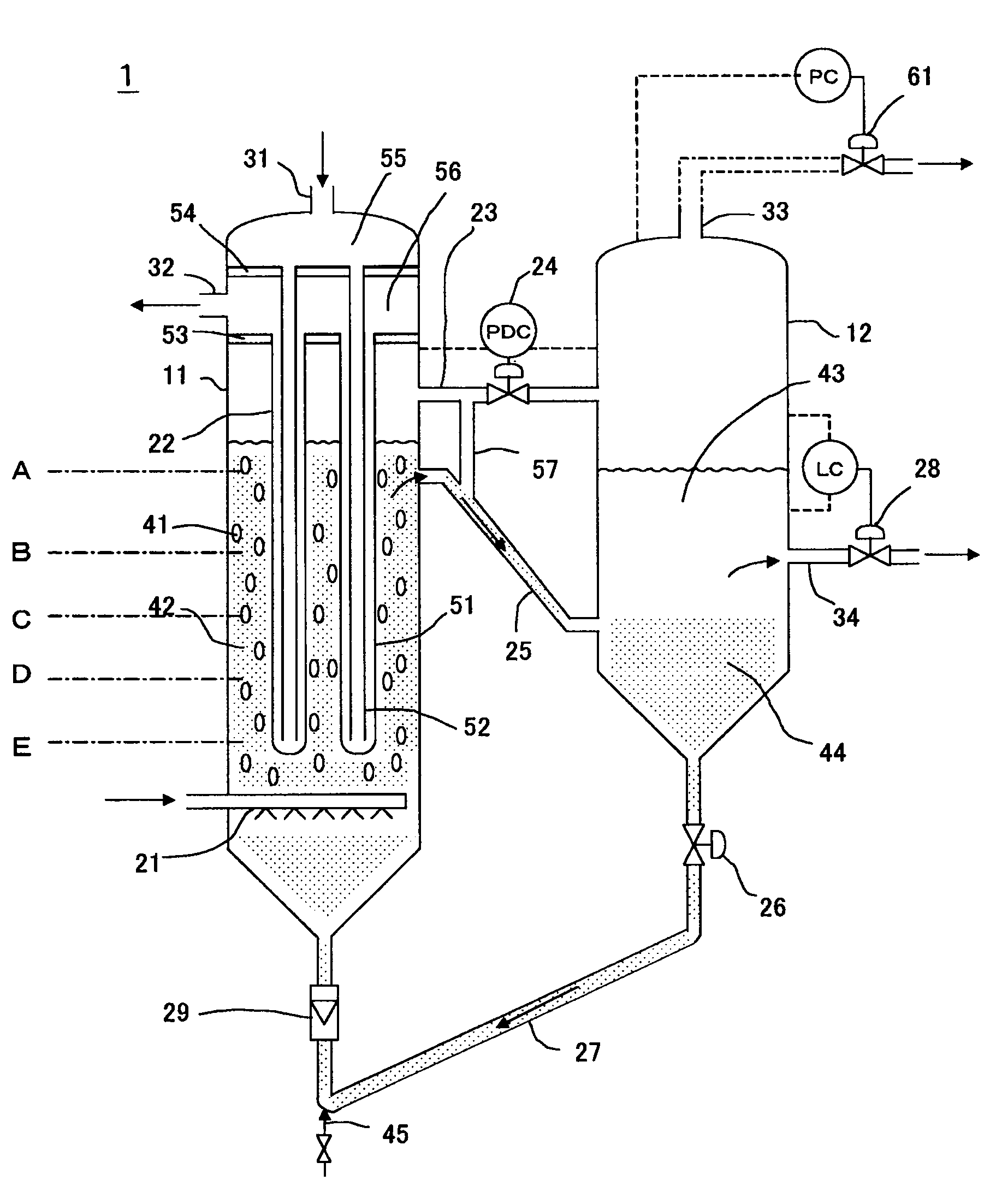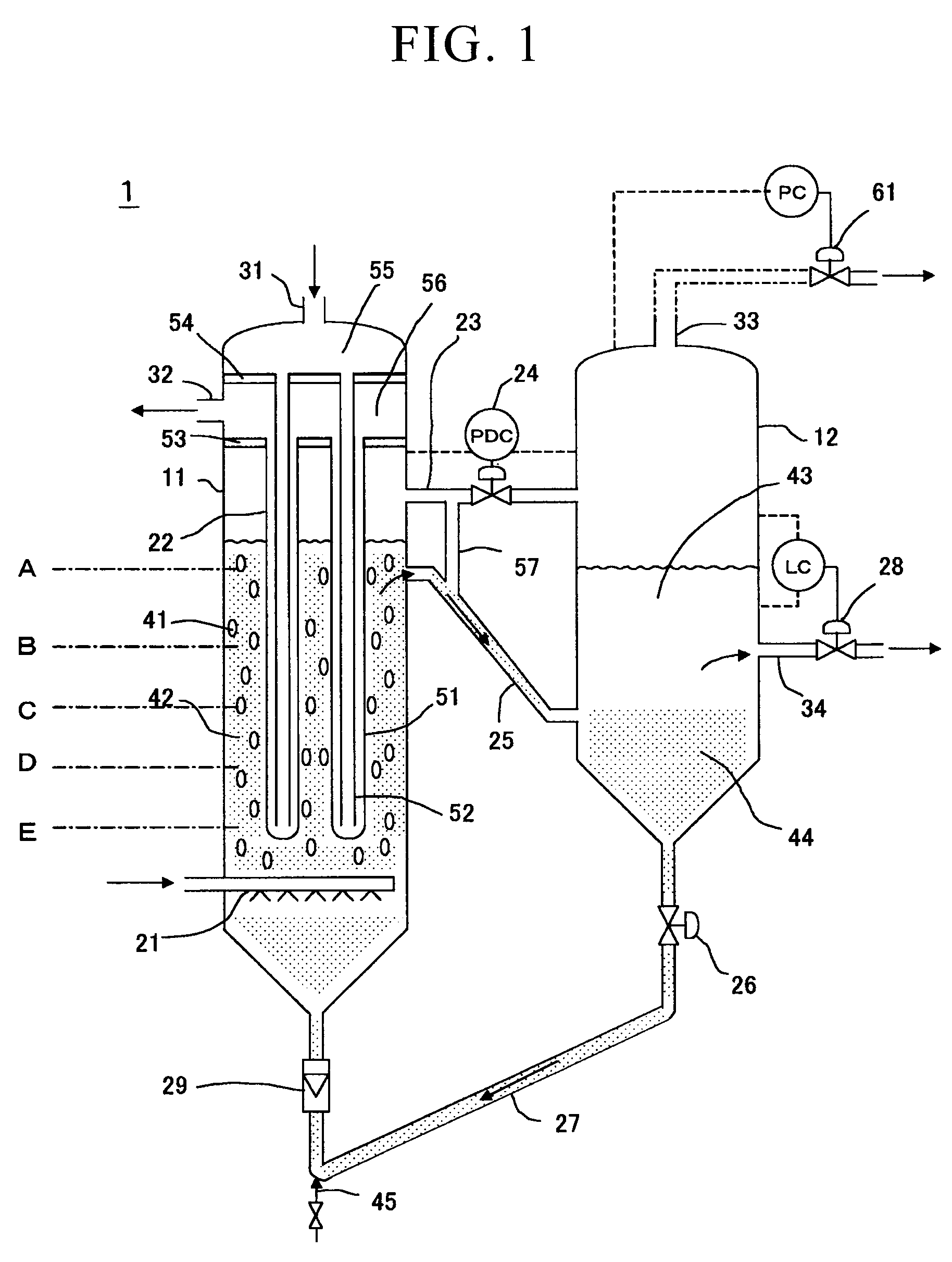Bubble column-type Fischer-Tropsch synthesis slurry bed reaction system
a slurry bed and reaction system technology, applied in furnace types, lighting and heating apparatuses, furnaces, etc., can solve the problems of complex operating system, deterioration of performance, and inability to avoid the occurrence of clogging of catalyst particles in the filter, so as to facilitate the maintenance and the synthesis of slurry bed. , the effect of easy monitoring of the circulation condition
- Summary
- Abstract
- Description
- Claims
- Application Information
AI Technical Summary
Benefits of technology
Problems solved by technology
Method used
Image
Examples
example 1
[0063]The reaction apparatus shown in FIG. 1 was used for the reaction apparatus.
[0064]Liquid hydrocarbon was produced by an FT synthesis reaction by supplying synthesis gas at a feed rate of 250 Nm3hour (100% load) and controlling the reaction pressure to be 2200 kPaG and the reaction temperature to be 240° C. (±2° C.). The results are shown in Table 1. In addition to controlling the reaction temperature inside the reactor to be in the aforementioned temperature range, boiler water was fed into the inner tubes of a plurality of bayonet-type cooling tubes, and controlled so as to obtain steam having a temperature of 231° C. and a pressure of 2735 kPaG from the cooling tube outer tube outlet. In addition, the CO conversion during this FT synthesis reaction was 62% under these operating conditions.
[0065]The temperature profile inside the reactor demonstrated a uniform temperature profile in which the temperature difference in the direction of the vertical axis of the reactor was 2° C....
example 2
[0066]A liquid hydrocarbon was produced by an FT synthesis reaction by supplying a synthesis gas at a feed rate of 100 Nm3hour (40% load) and controlling the reaction pressure to be 2200 kPaG and the reaction temperature to be 230° C. using the same reaction apparatus as in Example 1. The results are shown in Table 1. In addition to controlling the reaction temperature inside the reactor to be in the aforementioned temperature range, boiler water was fed into the inner tubes of a plurality of bayonet-type cooling tubes, and controlled so as to obtain steam having a temperature of 226° C. and a pressure of 2450 kPaG from the cooling tube outer tube outlet. In addition, the CO conversion during this FT synthesis reaction was 89% under these operating conditions.
[0067]The temperature profile inside the reactor demonstrated a uniform temperature profile in which the temperature difference in the direction of the vertical axis of the reactor was 1° C. or less under the conditions of a su...
PUM
 Login to View More
Login to View More Abstract
Description
Claims
Application Information
 Login to View More
Login to View More - R&D
- Intellectual Property
- Life Sciences
- Materials
- Tech Scout
- Unparalleled Data Quality
- Higher Quality Content
- 60% Fewer Hallucinations
Browse by: Latest US Patents, China's latest patents, Technical Efficacy Thesaurus, Application Domain, Technology Topic, Popular Technical Reports.
© 2025 PatSnap. All rights reserved.Legal|Privacy policy|Modern Slavery Act Transparency Statement|Sitemap|About US| Contact US: help@patsnap.com


